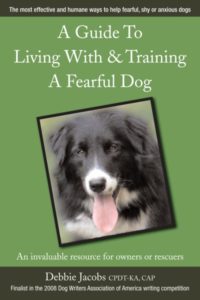In last season’s edition of The Master Skier Annual Cross Country Ski Journal, I came across this information in an article by Dan Heil (Competitive Edge p. 55).
“The ability to physically perform and respond to stress (i.e., adapt and recover) can best be described as a moving target for the master athlete.”
I dare say it’s true for any athlete, not just the aging one (“master” is a nice way of saying you’re no spring chicken anymore). It’s also applicable to dogs who are training for sports or fearful dogs who are training for life. Heil goes on to say,
“There are two principles of exercise training that serve as the foundation for any type of formal training program: The Overload Principle (The body must be challenged at a level above what is “comfortable” before it will adapt), and The Specificity Principle (Adaptations are most specific to the type of overload experienced).
When beginners start training for any sport, however, there is almost no need for a formal training plan because the body is adapting to both the novelty of the activity (specificity is not needed) and the overload experienced by every system in the body. In short, every exercise performed by the beginner’s body is an overload.”
I could kiss this guy. Or at least thank him. When we are working with fearful dogs both the Overload and Specificity Principles can be applied, and they are, in some form by many people. I was accused of keeping Sunny “trapped” in his fear because some felt I was not challenging him enough for him to adapt to increasingly stressful conditions. However when using desensitization and counter conditioning to work with a fearful dog the process of desensitization incorporates this principle, so their claim was unfounded.
What they were reacting to was that I was not using the same degree of overload they routinely apply when working with dogs. A degree which I would label “flooding.” The Overload Principle has its limits. Push a body too physically hard and you can wind up with injuries, serious ones in some cases. Even if there is no physical damage it is possible to turn the activity into an aversive event. Take a beginner skier to the top of a black diamond trail and shove them down and you may find that in the future they resist your invitations to go skiing again. Frustration and fear can be the result when the overload taxes the system too much. Bodies and brains should and do enjoy challenges, exemplified by dogs who perform 3 minute uninterrupted freestyle dance routines in crowded stadiums and the space shuttle.
The Specificity Principle plays very nicely into the dog’s limited ability to “generalize.” My own fearful dog will behave one way with people under a specific set of conditions, outside with frisbees flying, for example, and another way under different conditions. It is best not to assume that a dog can positively adapt to levels of stress that were appropriate under one set of conditions, applied under another. You might faithfully run on the treadmill at the gym, and consider yourself to be in good physically condition but after an hour bicycling outside start dreaming of a hot bath and a couple of aspirin. You can use your big brain to understand that bicycles are not machines of pain and torture, and if there were aspects of the experience that you found pleasant, gladly hop on a bike again.
The goals we have for our dogs’ behavior are also “moving targets.” Achieve one goal and new goals suddenly appear. A dog learns to get into the car by himself but leaps to the floor when he sees people when out driving. It never ends and we can either find that exhausting or exhilarating, or more likely both depending on how much overload we are experiencing.
Perhaps the most insightful statement Heil makes for us is in regard to beginners experiencing everything as overload. When a fearful dog is captured, adopted, bought or relocated they are beginners and we can assume that they are experiencing overload. When studies are done this overload can be measured in their cortisol levels. Pet owners, foster care givers, shelter workers or rescue groups don’t need to run tests on blood or saliva to know this, it should be assumed and form the basis for how these animals will be handled and managed.





